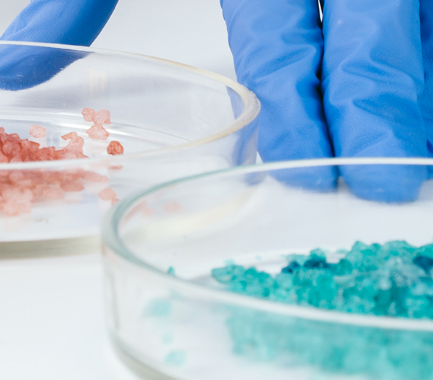Your contact
PENPET-Team - Hamburg

Tim Meister
Sales
Tel. +49 (0) 40 - 675 7 99 40
sales@penpet.de
Get in touch with us.
Trimethylolpropane (TMP)
Trimethylolpropane (TMP) is an organic compound and belongs to the group of polyhydric alcohols. The substance is an important starting material for synthesis processes in the chemical industry. It is obtained in a two-stage process from butanal, which is first expanded to 2,2-bis-hydroxymethylbutanal by condensation with formaldehyde and then reduced to a trihydric alcohol in a Cannizzaro reaction.
The compound is used as a raw material for the synthesis of organic compounds such as trimethylolpropane trimethacrylate, which are used to produce polyurethanes, polyesters, polyethers and alkyd resins and are required for the production of surfactants, adhesives, binders, lubricants, varnishes, paints and coatings. Due to these applications, trimethylolpropane is of great importance for furniture production, construction and the automotive industry.
At PENPET you can easily and sustainably order quantities of trimethylolpropane (TMP). We look forward to receiving your inquiry for an individual offer. The compound can be delivered as a crystalline solid in sacks and Big Bags of various weights and as a heating load in ISO tank containers.
CAS no. 77-99-6
EINECS no. 201-074-9
Molecular formula: C6H14O3
Synonyms: 1,1,1-trimethylolpropane, 1,1,1-tris(hydroxymethyl)propane, propylidynetrimethanol, 2,2-bis(hydroxymethyl)butan-1-ol, 2-ethyl-2-(hydroxymethyl)propan-1, 3-diol, 2-ethyl-2-(hydroxymethyl)-1,3-propanediol, trimethylolpropane, TMP
Areas of application: Base material for the production of polyethers, polyesters, polyurethanes, alkyd resins, surfactants, binders, adhesives, lacquers, paints, lubricants and coatings
More Information
Trimethylolpropane (TMP) has an almost symmetrical, star-shaped structure. At the center of its molecule is the terminal carbon atom of a propyl group, which is linked to three methylol residues. These each have an alcoholic hydroxy group at their end. Due to these functional groups extending in three directions of space, trimethylolpropane has high reactivity and the ability to form multiple bonds in polymerization processes. The triol can therefore be used in the production of polymer plastics for the three-dimensional crosslinking of molecular structures.
Under normal conditions, trimethylolpropane (TMP) forms a crystalline solid in the form of a white powder. The compound has a faint but characteristic odor. Thanks to its three polar hydroxy groups, the substance has hygroscopic properties and is easily soluble in water and ethanol. Trimethylolpropane is not soluble in other organic solvents such as carbon tetrachloride or benzene. The aqueous solution of the substance has a pH of 6.5. At temperatures around 60 °C, the solid gradually changes to a molten state. The liquid boils at 295 °C.
When stored dry and airtight, trimethylolpropane (TMP) is a chemically stable compound, but tends to react violently with strong oxidizing agents.
The substance is flammable but difficult to ignite. Pure trimethylolpropane is not explosive. However, if fine powder dust is whirled up, explosive air-dust mixtures can form. It is therefore important to ensure airtight storage and appropriate occupational safety measures when handling open containers of the compound. Keep trimethylolpropane away from open flames, hot surfaces, electrostatic charges, welding sparks and other sources of ignition.
Contact with trimethylolpropane (TMP) can cause irritation and reddening of the skin, eyes and respiratory tract. Affected body areas should be rinsed thoroughly with water. Trimethylolpropane is considered toxic to reproduction with possible effects on fertility and the health of the unborn child. Therefore, avoid swallowing the compound. In tolerance studies on animals, the intake of very large amounts of the substance also caused impairments of the central nervous system, changes in breathing control and drowsiness.
The compound has been assessed by the environmental authorities as slightly hazardous to water. Trimethylolpropane should not be discharged into the ground, open water or the sewage system. Appropriate precautions must be taken.
